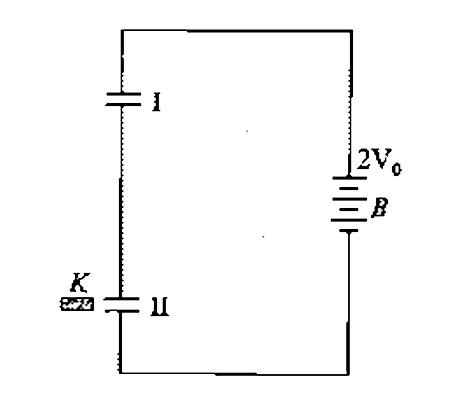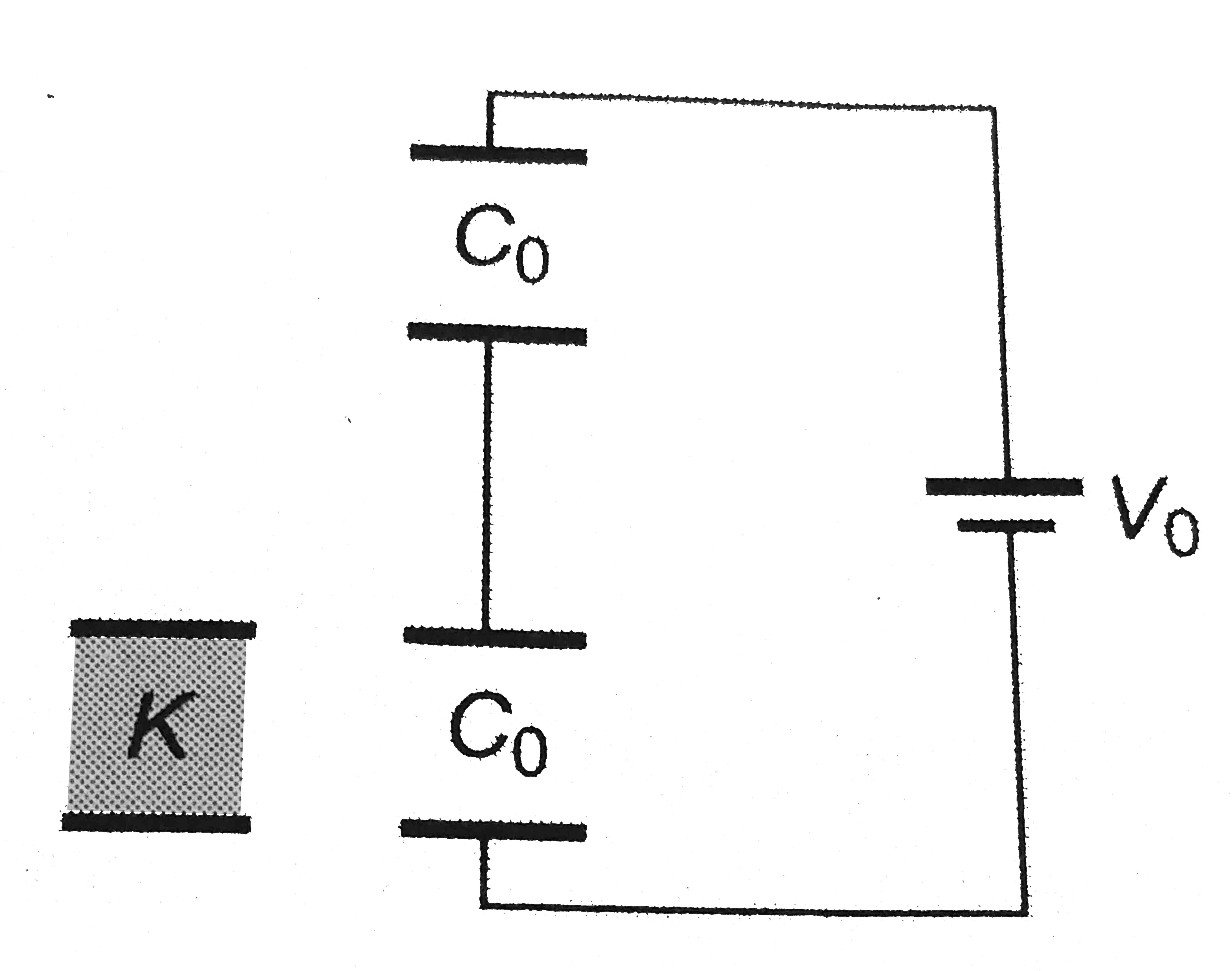Two identical capacitors are connected as shown in fignre. A dielectric slab is introduced between the plates of one of the capacitors so as to fill the gap, the battery remaining connected. What will be the capacitance, the charge, potential difference and stored energy for each capacitor?

Step by step video & image solution for Two identical capacitors are connected as shown in fignre. A dielectric slab is introduced between the plates of one of the capacitors so as to fill the gap, the battery remaining connected. What will be the capacitance, the charge, potential difference and stored energy for each capacitor? by Physics experts to help you in doubts & scoring excellent marks in Class 12 exams.
Topper's Solved these Questions
- BOOK - PHYSICS GALAXY - ASHISH ARORACHAPTER - CAPACITANCEEXERCISE - DISCUSSION QUESTIONS22videos
CAPACITANCE
- BOOK - PHYSICS GALAXY - ASHISH ARORACHAPTER - CAPACITANCEEXERCISE - CONCEPTUAL MCQA32videos
CAPACITANCE
- BOOK - PHYSICS GALAXY - ASHISH ARORACHAPTER - ATOMIC PHYSICSEXERCISE - Unsolved Numerical Problems39videos
ATOMIC PHYSICS
- BOOK - PHYSICS GALAXY - ASHISH ARORACHAPTER - CURRENT ELECTRICITYEXERCISE - All Questions389videos
CURRENT ELECTRICITY
Similar Questions
Two identical capacitors are connected as shown. A dielectric slab Is introduced between the plates of one of the capacitors so as to fill the gap, the battery remaining connected. Compare the capacitance, the charge, potential difference and stored energy of each capacitor before and arter introducting of dielectric slab.
 View Solution
View SolutionWhen a dielectric is introduced between the plates of a capacitor, which is connected to a battery of voltage V, the charge on the plates remains unchanged.
View Solution
Knowledge Check
- Question 1 - Select One
Two identical capacitors are connected as shown in the figure. A dielectric slab is introduced between the plates of one of the capacitors so as to fill the gap, the battery remaining connected. The charge on each capacitor will be (charge on each condenser is q0,k= dielectric constant).
 .A2q01+1/kBq01+1/kC2q01+kD2q01+k
.A2q01+1/kBq01+1/kC2q01+kD2q01+k - Question 2 - Select One
While a capacitor remains connected to a battery and dielectric slab is applied between the plates, then
APotential difference between the plates is changedBChange flows from the battery to the capacitorCElectric field between the plates increasesDEnergy store in the capacitor decreases - Question 3 - Select One
A parallel plate copacitor is first charged and then isolated, and a dielelctric slab is introduced between the plates. The quantity that remains unchanged is.
ACharge QBPotential VCCapacity CDEnergy U
If the capacitor is kept connected with the battery and then the dielectric slab is inserted between the plates, then what will be the change in the charge, the capacitance the potential difference, the electric field an the stored energy?
View SolutionA capacitor of capacitance C is connected to a battery of V volts.A dielectric k=73 is introduced betwene the plates of the capacitor when battery is connected.The ratio of energies stored in the capacitor without dielectric and with dielectric..
View SolutionSeparation between the plates of a capacitor is increased from d to 2d while the battery remains connected with the plates. How will the stored energy in the capacitor change?
View SolutionA parallel plate capacitor is connected across a source of covstant potential difference. If a dielectric slab is introduced between the two plates, then
View SolutionTwo identical capacitors are connected in series with a source of constant voltage V. If Q is the charge on one of the capacitors, the capacitance of each capacitor is :
View Solution
